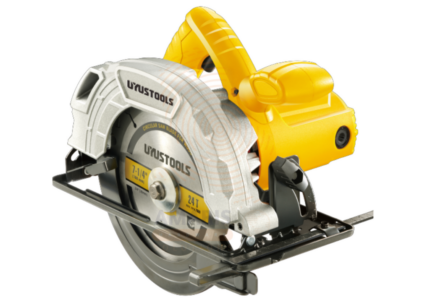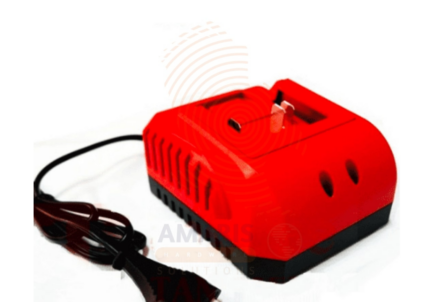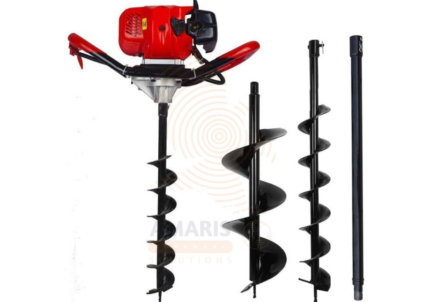
T Type Wrench
$14.50 Original price was: $14.50.$13.78Current price is: $13.78.

Tap Drill Bit
$14.23 Original price was: $14.23.$13.52Current price is: $13.52.
Table Saw
$223.08 Original price was: $223.08.$211.93Current price is: $211.93.
WhatsApp Order
A table saw is a versatile woodworking tool consisting of a flat tabletop surface with a vertically mounted circular saw blade that protrudes through the surface. It is typically used for making precise and straight cuts in various materials, especially wood. The saw blade can be adjusted in terms of height and angle, and the material to be cut is guided along a fence for accuracy. Table saws are widely employed in carpentry, woodworking, and construction for tasks such as rip cuts, crosscuts, and bevel cuts. They come in various sizes and configurations to suit different applications and user preferences.
Description
Table of Contents
ToggleTable Saw
Uses
-
Rip Cuts:
-
Table saws excel at making long, straight cuts parallel to the grain of the wood. This is known as a rip cut and is often used when cutting large panels or sheets.
-
-
Crosscuts:
-
Table saws can be equipped with sleds, miter gauges, or other accessories to facilitate perpendicular cuts across the wood grain, known as crosscuts.
-
-
Miter Cuts:
-
By using a miter gauge or a miter sled, table saws can make angled cuts, also known as miter cuts. This is particularly useful for creating joints or angled edges.
-
-
Bevel Cuts:
-
Table saws with tilting arbor capability can make bevel cuts, where the blade is tilted to create an angled edge on the workpiece.
-
-
Dado and Rabbet Cuts:
-
Table saws equipped with dado blades or a dado stack can cut grooves (dado cuts) or recesses (rabbet cuts) in the wood for joinery or other purposes.
-
-
Resizing Lumber:
-
Table saws are commonly used to resize lumber, whether it’s to cut large boards into smaller pieces or to trim down oversized panels.
-
-
Making Joints:
-
Table saws are essential for creating various woodworking joints such as dados, tenons, and lap joints, providing precision and consistency in joinery work.
-
-
Sheet Goods Processing:
-
Table saws are valuable for breaking down large sheets of materials like plywood or MDF into more manageable sizes for further construction or cabinetry work.
-
-
Trimming and Molding Work:
-
Fine-tuning the dimensions of trim pieces or creating custom moldings can be achieved efficiently with a table saw.
-
-
Home Improvement Projects:
-
Table saws are widely used in home improvement and construction projects for tasks such as building shelves, cabinets, doors, and other woodworking applications.
-
-
Furniture Making:
-
Woodworkers often use table saws in the construction of furniture, as they provide the accuracy and precision required for crafting pieces with tight tolerances.
-
SAFETY HANDLING PRECAUTIONS
Safety Precautions
-
Read the Manual:
-
Familiarize yourself with the manufacturer's instructions and safety guidelines provided in the table saw's manual. Understand the specific features, adjustments, and safety precautions recommended by the manufacturer.
-
-
Wear Personal Protective Equipment (PPE):
-
Always wear appropriate personal protective equipment, including safety glasses or goggles, hearing protection, and dust masks. If the material being cut is particularly dusty, consider using a respiratory mask.
-
-
Keep the Workspace Clean:
-
Maintain a clean and clutter-free work area. Remove debris, offcuts, and other objects from the table and the floor to prevent tripping hazards and interference with the cutting process.
-
-
Use a Riving Knife or Splitter:
-
Install and properly align a riving knife or splitter behind the saw blade. This helps prevent the material from pinching the blade and reduces the risk of kickback.
-
-
Adjust Blade Height:
-
Set the blade height just above the material being cut. This minimizes the exposed blade and reduces the risk of accidents.
-
-
Use a Push Stick or Push Block:
-
Employ push sticks or push blocks to maintain a safe distance between your hands and the blade, especially when making narrow cuts. Never use your hands to guide the material when it is close to the blade.
-
-
Maintain Proper Body Position:
-
Stand to the side of the saw, not directly in line with the blade. Maintain a balanced and stable stance, with your feet firmly planted on the ground.
-
-
Secure the Material:
-
Use a miter gauge, rip fence, or other appropriate guides to secure the material and maintain a consistent and safe cutting path.
-
-
Avoid Freehand Cutting:
-
Whenever possible, avoid freehand cutting. Use guides, jigs, or fences to ensure accurate and controlled cuts.
-
-
Disconnect Power when Adjusting:
-
Before making any adjustments to the blade height, angle, or changing the blade, disconnect the power to the table saw to prevent accidental starts.
-
-
Wait for the Blade to Stop:
-
Never reach across the blade or remove cut-off pieces until the blade has come to a complete stop. Allow the blade to stop rotating before making any adjustments or clearing the workspace.
-
-
Use a Blade Guard:
-
Whenever possible, use the blade guard provided with the table saw. It helps protect against accidental contact with the blade.
-
-
Stay Focused:
-
Avoid distractions while operating the table saw. Stay focused on the task at hand to reduce the likelihood of errors or accidents.
-
-
Keep Emergency Stop Accessible:
-
Know the location of the emergency stop button or switch and keep it accessible. Be prepared to shut off the power quickly in case of an emergency.
-
-
Inspect and Maintain:
-
Regularly inspect the table saw for any damage, wear, or malfunctions. Keep the saw well-maintained, and address any issues promptly.
-
Related products
Big Battery Pro
A " Big Battery Pro" typically refers to a rechargeable lithium-ion battery with a nominal voltage of 20 volts. The nominal voltage represents the average voltage output over the majority of the battery's discharge cycle. It's important to note that the actual voltage during use may fluctuate within a specified range.
These batteries are commonly used to power various devices, including power tools, garden equipment, and other portable electronic devices. The "20V" designation is a standardized measure indicating the electrical potential of the battery, providing a general indication of its power output.
Keep in mind that when considering a 20V battery, it's essential to verify compatibility with the specific device or tool it is intended for. Additionally, different manufacturers may have variations in the actual voltage, capacity, and features of their 20V battery products. Checking the product documentation or contacting the manufacturer for detailed specifications is recommended for accurate information.
Circular Saw
A circular saw is a power tool equipped with a rotating circular blade, typically with teeth along its edge, designed for cutting various materials such as wood, plastic, metal, or masonry. It is commonly used in carpentry, construction, and other applications to make straight or beveled cuts with precision and efficiency. The circular saw is versatile and can be handheld or mounted on a table or other stationary surface, depending on the specific model and intended use.
Circular Saw Blade for Aluminum
A circular saw blade for aluminum is a cutting tool specifically designed for use with a circular saw to cut through aluminum materials. It features specialized teeth and design elements to optimize the cutting process for aluminum, which has different characteristics compared to wood or other materials. These blades typically have a high tooth count, often with specially shaped teeth, and may incorporate coatings or materials that reduce heat buildup during cutting. The goal is to provide efficient and clean cuts through aluminum while minimizing the risk of overheating or material deformation.
Fast Charger
A fast charger is a device designed to quickly recharge compatible batteries with a voltage rating of 20 volts. The "fast" designation implies that the charger is engineered to deliver a higher charging current, allowing for a more rapid replenishment of the battery's energy capacity compared to standard chargers. This type of charger is commonly used for power tools, electronic devices, or other equipment that operates on 20V batteries, providing users with a more efficient and time-saving charging solution.
Fibre Strengthened Resin Cutting Wheel
A Fibre Strengthened Resin Cutting Wheel refers to a cutting tool designed for various machining applications, particularly in the context of metalworking or construction. This type of cutting wheel is composed of a resin matrix, which serves as a binding material, reinforced with fibers for added strength and durability. The fibers are typically made of materials such as fiberglass or other composite materials.
The combination of resin and fibers enhances the cutting wheel's structural integrity, making it more resistant to breakage and providing improved performance during cutting operations. The reinforced design allows the wheel to withstand higher levels of mechanical stress and heat generated during cutting processes. Fiber-strengthened resin cutting wheels are commonly used in applications like cutting metal, steel, or other hard materials, where precision and durability are crucial.
Forstner Bits
A Forstner bit is a specialized woodworking drill bit designed for creating flat-bottomed holes with a clean and precise finish. Unlike traditional twist drill bits, Forstner bits have a cylindrical, flat-bottomed shape with a center point and cutting edges along the circumference. These bits are commonly used when a smooth and accurately sized hole without breakthrough is required in woodworking applications, such as for drilling holes for dowels or creating recesses for hardware like hinges. Forstner bits are known for their ability to produce clean and splinter-free boreholes, making them popular among woodworkers and cabinetmakers for tasks that demand precision and aesthetics.
Forstner Drill Bits
PRODUCT DESCRIPTION
A Forstner drill bit is a specialized cutting tool used in woodworking to create flat-bottomed holes with smooth sides. Unlike traditional twist or spade drill bits, Forstner bits are characterized by a cylindrical shape with a flat bottom and a rim that cuts the perimeter of the hole. These bits are well-suited for precision drilling tasks, such as creating boreholes for dowels or hinge cups, as they produce clean and accurate results, minimizing tear-out and splintering in the wood. Forstner drill bits are commonly used in cabinetry, furniture making, and other woodworking applications where precise and clean hole drilling is essential.
Gasoline Auger Machine
A gasoline auger machine is a power tool designed for drilling holes in the ground using a rotating helical screw blade, commonly known as an auger. Unlike electric or manual augers, a gasoline auger machine is powered by a gasoline engine, providing greater mobility and independence from electrical power sources. This type of machine is commonly used in construction, landscaping, and agriculture for tasks such as digging holes for fence posts, planting trees, or installing various types of foundations. The gasoline engine provides the necessary power to turn the auger bit efficiently, making it suitable for heavy-duty and remote applications where access to electricity may be limited.


 Acrylic Sealants
Acrylic Sealants Construction Adhesives
Construction Adhesives Double-Sided Tape
Double-Sided Tape Duct Tape
Duct Tape Electrical Tape
Electrical Tape Epoxy & Resins
Epoxy & Resins Masking Tape
Masking Tape
 Automotive Wrenches & Socket Sets
Automotive Wrenches & Socket Sets Battery Chargers & Jump Starters
Battery Chargers & Jump Starters Car Jacks & Stands
Car Jacks & Stands Car Wash & Detailing Products
Car Wash & Detailing Products Diagnostic Tools
Diagnostic Tools Tire Inflators
Tire Inflators Vehicle Lighting
Vehicle Lighting Oil & Lubricants
Oil & Lubricants
 Adhesives & Sealants
Adhesives & Sealants Bricks & Blocks
Bricks & Blocks Cement & Concrete
Cement & Concrete Drywall & Plaster
Drywall & Plaster Flooring (Tiles, Wood, Laminate)
Flooring (Tiles, Wood, Laminate) Lumber & Plywood
Lumber & Plywood Paints, Primers & Coatings
Paints, Primers & Coatings Insulation Materials
Insulation Materials Roofing Materials
Roofing Materials
 Circuit Breakers
Circuit Breakers Electrical Cables & Wires
Electrical Cables & Wires Switches & Sockets
Switches & Sockets Fuses & Relays
Fuses & Relays Connectors & Terminals
Connectors & Terminals Electrical Boxes & Panels
Electrical Boxes & Panels Conduit & Fittings
Conduit & Fittings Lighting Fixtures & Bulbs
Lighting Fixtures & Bulbs Extension Cords & Power Strips
Extension Cords & Power Strips
 Anchors
Anchors Bolts
Bolts Clips & Clamps
Clips & Clamps Screws
Screws Nuts
Nuts Washers
Washers Rivets
Rivets Nails
Nails Threaded Rods
Threaded Rods
 Hammers
Hammers Measuring Tools (Tapes, Levels, Calipers)
Measuring Tools (Tapes, Levels, Calipers) Screwdrivers
Screwdrivers Pliers & Cutters
Pliers & Cutters Saws & Blades
Saws & Blades Chisels & Punches
Chisels & Punches Allen Keys & Hex Keys
Allen Keys & Hex Keys Ratchets & Socket Sets
Ratchets & Socket Sets Wrenches & Spanners
Wrenches & Spanners
 Power Tool Accessories (Blades, Bits, Discs)
Power Tool Accessories (Blades, Bits, Discs) Rotary Tools
Rotary Tools Saws (Circular, Jigsaw, Reciprocating)
Saws (Circular, Jigsaw, Reciprocating) Drills & Drivers
Drills & Drivers Grinders & Sanders
Grinders & Sanders Heat Guns
Heat Guns Nail Guns
Nail Guns Impact Wrenches
Impact Wrenches Batteries & Chargers
Batteries & Chargers
 Pipes & Fittings (PVC, Copper, PEX)
Pipes & Fittings (PVC, Copper, PEX) Plumbing Tools
Plumbing Tools Pumps & Motors
Pumps & Motors Sealants & Adhesives for Plumbing
Sealants & Adhesives for Plumbing Valves & Taps
Valves & Taps Water Heaters
Water Heaters Drainage Systems
Drainage Systems Faucets & Fixtures
Faucets & Fixtures Hoses & Tubing
Hoses & Tubing
 Hinges & Latches
Hinges & Latches Hooks & Brackets
Hooks & Brackets Window Hardware
Window Hardware Chains & Cables
Chains & Cables Casters & Wheels
Casters & Wheels Shelving & Storage Systems
Shelving & Storage Systems Door Handles & Locks
Door Handles & Locks Drawer Slides & Cabinet Hardware
Drawer Slides & Cabinet Hardware
 Personal Protective Equipment (PPE)
Personal Protective Equipment (PPE) Respirators & Masks
Respirators & Masks Safety Glasses
Safety Glasses Safes
Safes Security Cameras
Security Cameras Gloves
Gloves Helmets
Helmets Ear Protection
Ear Protection Fire Safety Equipment
Fire Safety Equipment Locks & Padlocks
Locks & Padlocks Motion Sensors & Alarms
Motion Sensors & Alarms
 Garden Fencing
Garden Fencing Garden Furniture Hardware
Garden Furniture Hardware Lawn Mowers
Lawn Mowers Trimmers & Edgers
Trimmers & Edgers Shovels & Spades
Shovels & Spades Rakes & Hoes
Rakes & Hoes Pruning Shears & Loppers
Pruning Shears & Loppers Watering Systems (Hoses, Sprinklers, Nozzles)
Watering Systems (Hoses, Sprinklers, Nozzles)
 Interior Paints
Interior Paints Paint Brushes & Rollers
Paint Brushes & Rollers Paint Strippers & Thinners
Paint Strippers & Thinners Paint Trays & Accessories
Paint Trays & Accessories Exterior Paints
Exterior Paints Spray Paints
Spray Paints Primers & Undercoats
Primers & Undercoats Varnishes & Stains
Varnishes & Stains
 Gaskets & Seals
Gaskets & Seals Hydraulic Fittings
Hydraulic Fittings Industrial Fasteners
Industrial Fasteners Industrial Hoses
Industrial Hoses Lubricants & Greases
Lubricants & Greases Metal Sheets & Bars
Metal Sheets & Bars Bearings & Bushings
Bearings & Bushings Belts & Pulleys
Belts & Pulleys
 HVAC Filters
HVAC Filters Insulation for HVAC
Insulation for HVAC Air Conditioners
Air Conditioners Refrigerants
Refrigerants Ventilation Ducts & Fittings
Ventilation Ducts & Fittings Thermostats & Controllers
Thermostats & Controllers Fans & Blowers
Fans & Blowers
 Pegboards & Hooks
Pegboards & Hooks Shelving Units
Shelving Units Storage Bins & Containers
Storage Bins & Containers Toolboxes & Tool Chests
Toolboxes & Tool Chests Workbenches
Workbenches Drawer Organizers
Drawer Organizers Labeling Supplies
Labeling Supplies
 Welding Accessories (Clamps, Brushes)
Welding Accessories (Clamps, Brushes) Welding Electrodes & Rods
Welding Electrodes & Rods Welding Helmets & Gloves
Welding Helmets & Gloves Welding Machines
Welding Machines Soldering Irons & Stations
Soldering Irons & Stations Flux & Solder Wire
Flux & Solder Wire
 Generator Accessories
Generator Accessories Inverters
Inverters Portable Generators
Portable Generators Power Inverters
Power Inverters Transfer Switches
Transfer Switches Diesel & Gasoline Generators
Diesel & Gasoline Generators
 Transport Equipment: Carts, Dollies, and Hand Trucks
Transport Equipment: Carts, Dollies, and Hand Trucks Storage Solutions: Pallets, Racks, and Containers
Storage Solutions: Pallets, Racks, and Containers Lifting Equipment: Hoists, Cranes, and Jacks
Lifting Equipment: Hoists, Cranes, and Jacks Conveyors and Accessories: Belts and Rollers
Conveyors and Accessories: Belts and Rollers











